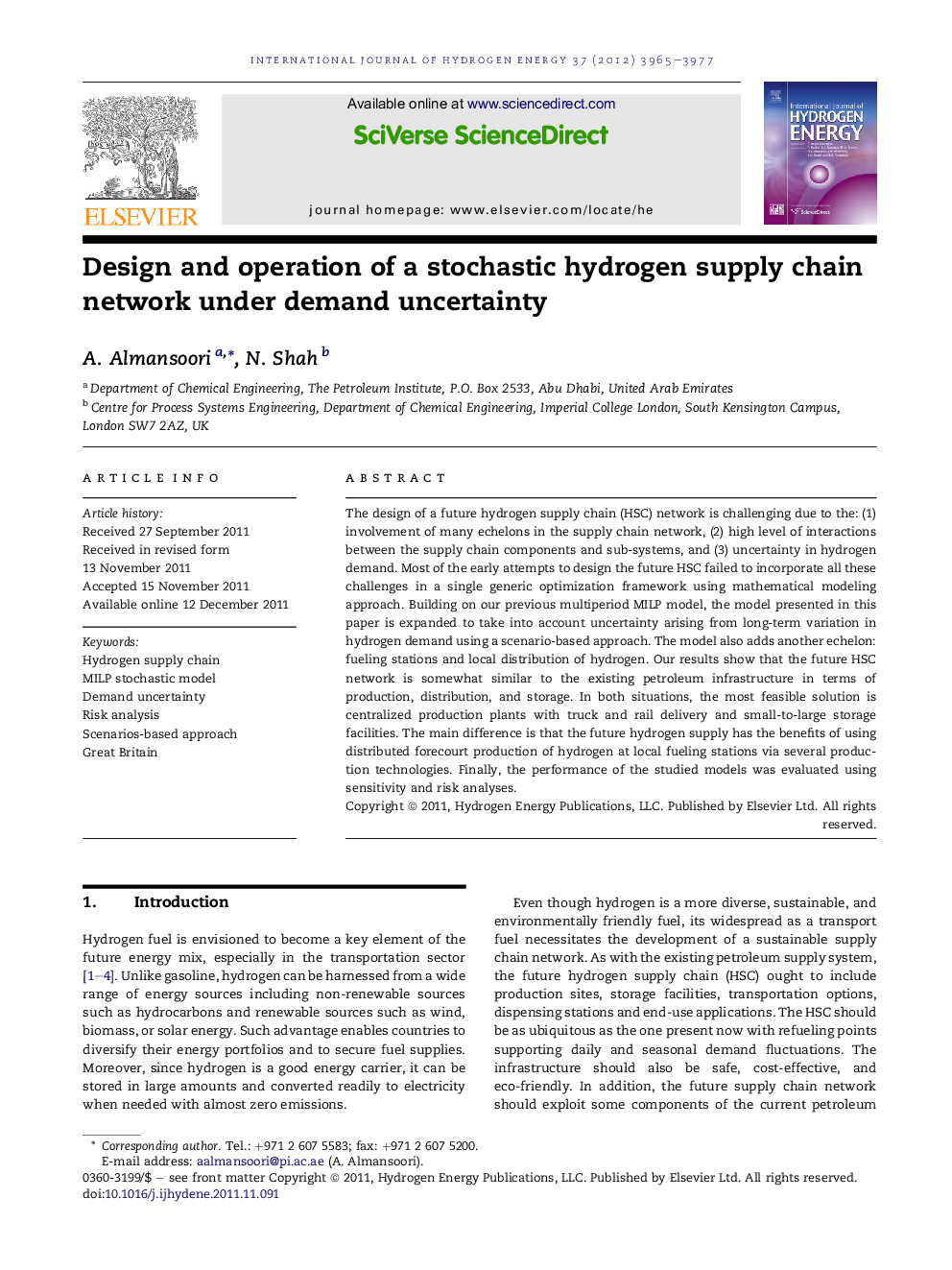| Article ID | Journal | Published Year | Pages | File Type |
|---|---|---|---|---|
| 1275449 | International Journal of Hydrogen Energy | 2012 | 13 Pages |
The design of a future hydrogen supply chain (HSC) network is challenging due to the: (1) involvement of many echelons in the supply chain network, (2) high level of interactions between the supply chain components and sub-systems, and (3) uncertainty in hydrogen demand. Most of the early attempts to design the future HSC failed to incorporate all these challenges in a single generic optimization framework using mathematical modeling approach. Building on our previous multiperiod MILP model, the model presented in this paper is expanded to take into account uncertainty arising from long-term variation in hydrogen demand using a scenario-based approach. The model also adds another echelon: fueling stations and local distribution of hydrogen. Our results show that the future HSC network is somewhat similar to the existing petroleum infrastructure in terms of production, distribution, and storage. In both situations, the most feasible solution is centralized production plants with truck and rail delivery and small-to-large storage facilities. The main difference is that the future hydrogen supply has the benefits of using distributed forecourt production of hydrogen at local fueling stations via several production technologies. Finally, the performance of the studied models was evaluated using sensitivity and risk analyses.
► The future hydrogen supply chain is modeled as a multi-stage stochastic MILP problem. ► The model incorporates demand uncertainly over a long-term planning horizon. ► Key strategic and operational decisions are determined by the model. ► The future network includes a mix of production, storage, and distribution technologies.
